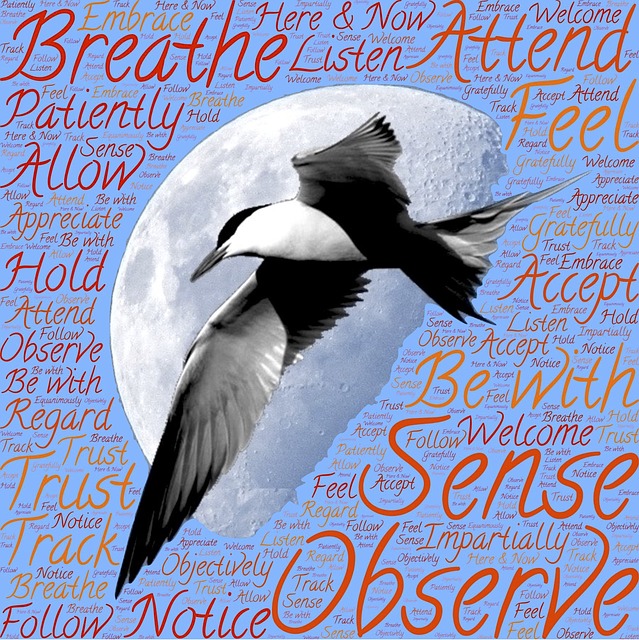Albert Flynn DeSilver has written a book titled, Awakening through Writing: The Space Between the Words, as a wake-up call to the power of writing as a means for exploring our inner landscape.
In an interview with Tami Simon, Albert identified some of the key messages in his book and I want to reflect on them here.
Time as a Construct
The concept of time is a human invention to enable us to communicate, collaborate and manage our lives singularly and collectively. We need this agreed convention to be able to function in our world (and across the world).
However, own own sense of time – “I don’t have enough time”, “there are not enough hours in the day” – is a personal construction. It is a consequence of choices that we make – the kind and level of work we choose to do, our commitment to the quantity and quality of our work, our family structure and established norms and rituals, and how we choose to spend our leisure or “left-over” hours. It is a reflection of our prioritising, our sense of self-esteem and empowerment (“my time is not my own”), our goals in life, our need for recognition, our willingness and ability to negotiate “time” to meet our own needs.
When we discussed what you are going to do with the surplus in your life, we highlighted the need to create space in your life. Albert reminds us that to realise the benefits of writing and meditation in terms of being able to achieve awakening or to grow in mindfulness, we need to look at the way we spend or “expend” our time. We have to “make time” to engage in writing and meditation on a regular basis.
Assess your motivation – why write?
If your writing is aligned with your personal goals and values, you have a better chance of sustaining the effort through the ups and downs of life and the writing cycle.
I have to constantly remind myself why I write so regularly. I’ve found that having multiple reasons for writing (some primary, others secondary) enables me to maintain the momentum. So I have reflected on my motivation and identified the following:
- to keep mindfulness at the forefront of what I am thinking about and doing
- to use writing as a journey in self-exploration
- to learn more about mindfulness and mindful practices
- to engage my mind in learning new things
- to share what I learn with others so that they can better handle life stresses and overcome the negative impact of depression and anxiety
- to integrate what I have learned from my various roles in life – as a student, manager, trainer, educator & consultant
- to help myself and others realise our creative potential
- to better understand what I can contribute to creating a better world.
I used to say to my doctoral students, “Do your research on something that you are passionate about, otherwise you will not be able to sustain the effort through the vicissitudes of daily life”. The same applies here if you are going to write on a regular basis, you need to be passionate about the topic and the audience. The motivation has to come from you – not from what other people say you should write about.
Reading
Many of the great writers were great readers and this is often reflected in their books or novels. You will often see writers quote poetry or the works of other authors to reinforce a point or introduce a new idea.
Reading can become a source of personal reflection, offer new perspectives on an issue, illustrate key ideas or points through life stories or act as a stimulus to your own writing. I would include here podcasts and videos as a source of ideas.
I find that if I am stuck for a topic to write about or for something to say on a topic, I will read an article/ report that is relevant, watch a video or listen to a podcast as a way to stimulate my own thoughts and reflections.
Discipline
Albert stresses the importance of discipline to advance your writing and insights. He points out that most great writers have a routine that fits their own lifestyle and personal work style.
You need to develop your own writing routine that will enable you to sustain the effort of writing. Great writers often warn about not just writing when “you are in the mood”, but pushing through the emotional barrier in a disciplined way by sticking to your routine, even if ideas are not flowing.
It may sound trite, but the reality is to become a great writer, you need to write…write…write.
The immersive element
If you are able to persist with researching and writing about a topic or an area of interest, you gain the benefits of immersion – you see connections that you did not see before, you deepen your knowledge and understanding of yourself and the world around you, you improve your self-management (via discipline & insight) and you are better able to make a significant, original contribution.
You also gr0w in mindfulness and your capacity to be fully present to what is happening in your life and world. Albert maintained, in his interview, that to make the commitment to develop mindfulness through writing requires courage:
I think for people to look inside, and to pause, and to really show up and be present in the world takes a tremendous amount of courage. And it seems to be more rare than ever, which is alarming. That’s why I’m so devoted to this work. Because I want to keep reminding people this is the most important thing we can do as human beings. Without changing consciousness and awareness, and having that positive influence, we’re really going to be kind of screwed as a species.
By Ron Passfield – Copyright (Creative Commons license, Attribution–Non Commercial–No Derivatives)
Image source: courtesy of Engin_Akyurt on Pixabay









